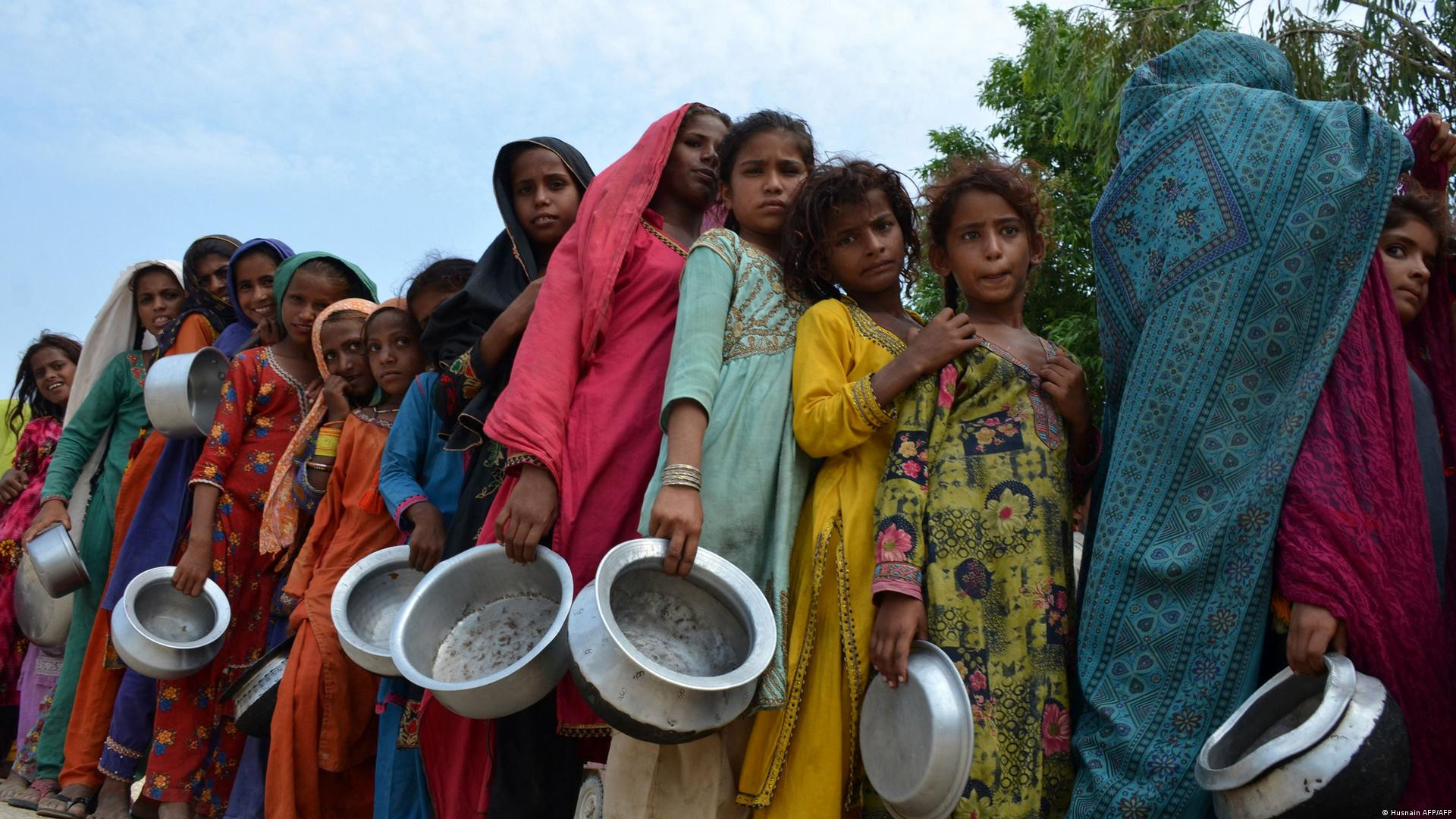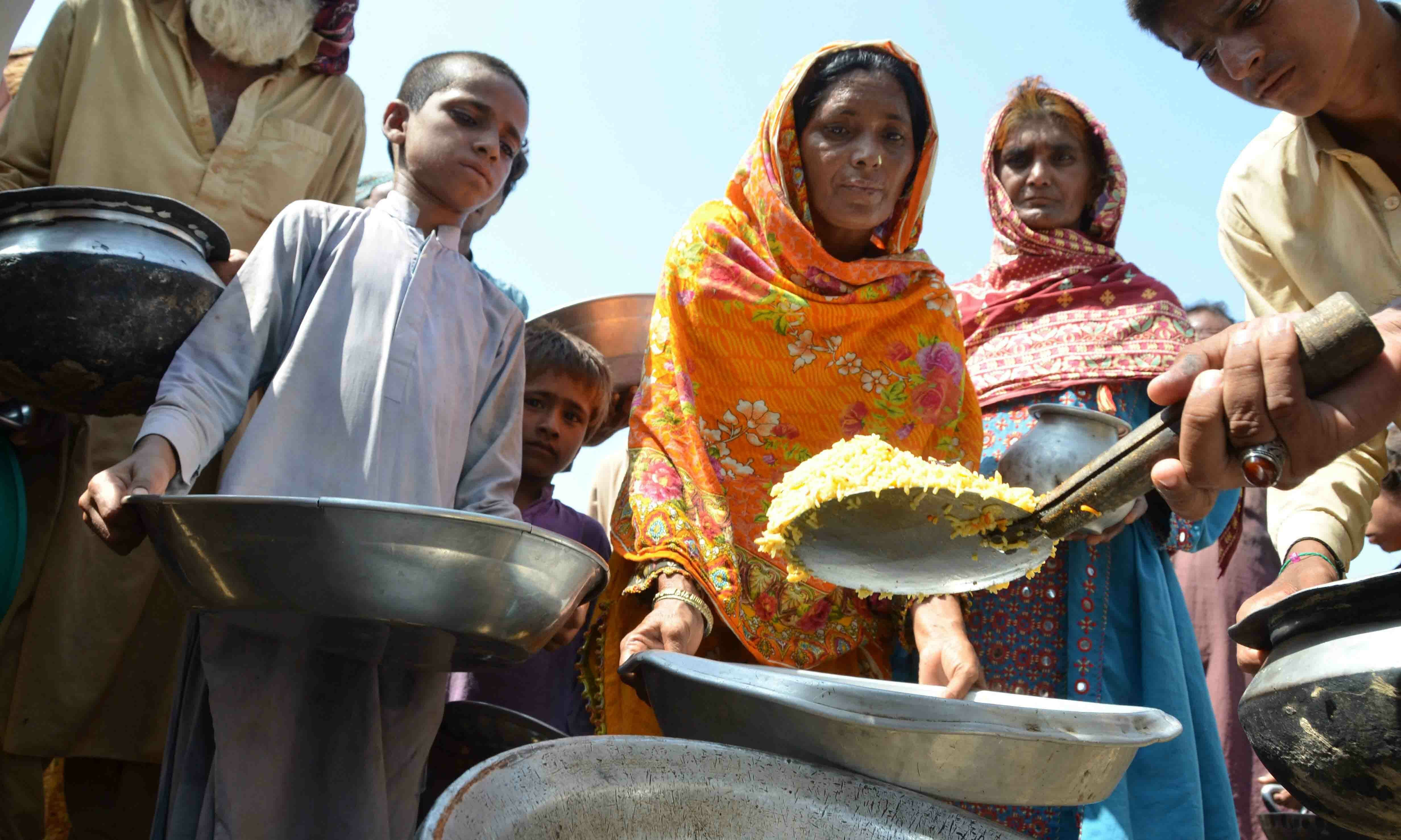The largest province of Pakistan, Balochistan is rich in natural resources, including minerals, oil, and gas. However, it is also home to a large population that faces numerous challenges, including food insecurity. In fact, three of Pakistan’s provinces — Balochistan, Khyber Pakhtunkhwa and Sindh — all suffer from malnutrition and poverty, with an alarmingly high prevalence of food insecurity. The impact of the pandemic compounded by natural disasters, such as last year’s flashfloods, and climate change have dealt multiple shocks to the populations of these provinces. The increasing frequency and intensity of extreme weather events, such as floods and cyclones, are also causing significant damage to crops and infrastructure.
Despite being an agricultural region, Balochistan is particularly characterized by low crop yields, lack of water, and limited access to basic amenities. As an arid and semi-arid region, with limited water resources, Balochistan is primarily dependent on rain-fed agriculture, which is characterized by low crop yields due to erratic rainfall patterns and poor soil quality. Moreover, the lack of modern irrigation systems, such as drip irrigation and sprinkler systems, exacerbate the problem of low crop yields.
Mir Abdul Rauf Lehri, a farmer in Jaffarabad, grows wheat, rice and chickpeas. The floods last year destroyed his farmland. After a few months, he was able to grow some wheat but he is one of the few who have been fortunate enough. Low crop yields due to heavy rain and hailstorms have affected wheat availability. In Quetta, after the flood, the queues of people waiting to buy flour grew longer and increasingly desperate.
Soaring food prices and livestock diseases have left the locals reeling to survive day to day.

The province has a high poverty rate, with an estimated 71% of the population living below the poverty line. Poverty and inequality limit access to education and healthcare, which in turn affects nutritional outcomes. The prevalence of malnutrition in Balochistan is 48.6%, which is higher than the national average of 40%, according to the National Nutrition Survey of Pakistan. The survey findings also reveal that 30.6% of children under the age of five in Balochistan are underweight, compared to the national average of 22%.
Anas Baloch, a resident of Sariab Road in Quetta, says that two years ago, a 350-gram roti cost 20 rupees; today a 270-gram roti is being sold at 30 rupees. Anas Baloch works as a supervisor at a private company and lived in a joint family comprising 24 members including 10 children. The family buys roti for dinner daily. Anas Baloch asks how the common man can survive in this current scenario when his daily needs are being affected. Without any increase in his salary, he is hard-pressed to reckon with the inflation rate that has increased by 200%. The people of Balochistan require some relief, he says, and the government’s immediate attention in the form of relief or subsidy.
Naeem Khilji, president of the Bread Union Balochistan says that due to the increased flour rates and unavailability of gas, they are compelled to increase the rates. Balochistan is unable to grow enough wheat to meet its requirements. According to Lehri, the agricultural disaster caused by last year's floods did not create such severe wheat and flour shortage in Balochistan as the one resulting from the smuggling of wheat from Balochistan to Sindh this year.
The provincial government imposed section 144 banning the transportation of wheat to other provinces. The wheat is being smuggled to Sindh and Afghanistan illegally as it is banned in Balochistan. Lehri says, “In Balochistan, a ban has been imposed on the transportation of wheat at the divisional level, due to which large quantities of wheat are going to Sindh from the districts of Jaffarabad, Usta Muhammad and Jhal Magsi, which are adjacent districts to Sindh,” from where the Food Department buys wheat.
Badarudin Kakar, former senior vice-president of Quetta Chamber of Commerce argues, “According to the constitution’s Article 151, no ban can be imposed on food items and especially on interprovincial movement. But after the 18th Amendment, the powers are given to the provinces that have imposed ban on the movement of wheat in violation of the constitution.
 According to Balochistan Food Minister Zamrak Khan Achakzai, Balochistan is dependent on Punjab and Sindh for 85% of wheat requirement whereas, Punjab and Sindh have imposed a ban on wheat export. “Balochistan needs 1,250,000 sacks of wheat per month. However, due to the recent floods in Pakistan, no province is able to provide wheat to other provinces,” says Haji Hashim, president of the Flour Mills Association.
According to Balochistan Food Minister Zamrak Khan Achakzai, Balochistan is dependent on Punjab and Sindh for 85% of wheat requirement whereas, Punjab and Sindh have imposed a ban on wheat export. “Balochistan needs 1,250,000 sacks of wheat per month. However, due to the recent floods in Pakistan, no province is able to provide wheat to other provinces,” says Haji Hashim, president of the Flour Mills Association.
Balochistan’s yearly purchase of wheat is around one million sacks from October to March which is only four percent to five percent of the total requirement and 95 percent of the requirement is met from the open market. Kakar says, “The yearly requirement of one person is 123 kg of wheat. 1.5 million metric ton of wheat is needed for the people of Balochistan.” He says that the open market must be regularized to stablise the wheat market in Pakistan.
Fortification of staple diet
A resident of Huda, Quetta, Abdul Jabbar Baloch says that the, government announced that 20kg of flour will be available for 1,500 rupees at subsidized rates. Disregarding the poor quality of that flour, it is not even available at this rate. People are instead forced to buy flour from the open market where a 20kg bag costs a whopping Rs 2,900. It is evident from the samples that the quality of wheat used to make the flour is severely compromised. People are not getting pure flour. The main reasons behind the substandard quality of subsidized flour are the absence of check and balance and mixing of hay in the flour. During distribution, and even prior to it, there is no system in place where the quality of the subsidized flour is monitored and subsequently evaluated. The poor will compromise on anything as long as they get it for free.
Balochistan Food Authority (BFA) Director General Mohammad Naeem Bazai says, “Food is a fundamental human need and normally we tend to think that every edible item qualifies as proper food and we can eat it without worry. Well this is not the case. There are three things which are mandatory for an edible item to qualify as a proper food. Firstly, it should be healthy and shouldn’t have any negative impact on health. Secondly, it should be nutritious. And thirdly, it should have a taste. These are the international standards but unfortunately our socio-economic conditions are such that consumers do not have purchasing power and they cannot demand for quality food.”
The Food Fortification Act, which exists only in Balochistan, the first province to take an initiative in this regard. As per the law, it is mandatory that fortification supplements be added in food items, including milk, flour and salt. The salt produced in Balochistan is 100% fortified. However, Balochistan produces 70% of the salt needed to meet its demand while the rest is bought from other provinces. As far as fortification of flour is concerned, flour mill owners have reservations regarding the increase in price of flour bags. The food department is sorting out this issue which is likely to be resolved soon as Rs8 per bag is not a big amount but the supplements are mandatory for health.
Mineral and vitamin deficiencies cost Pakistan nearly US $3 billion in GDP losses annually, whereas fortification of staple food has a negligible additional cost. However, for the industry, the cost of fortification becomes substantial as it entails initial investments and purchase of micronutrient pre-mix in bulk. The latter is a recurring cost and Nutrition International is doing advocacy with the Government of Pakistan to remove taxes on import of premix.

Habibur Rehman, communication officer for Nutrition International, says, “The Food Fortification Program in Balochistan will help to reduce and prevent micronutrient deficiencies through cost-effective and sustainable interventions such as staple food fortification. Adding the required vitamins and minerals to the staple diet will provide a viable solution to the problem of malnutrition without changing dietary habits or putting undue burden on the provincial government’s budget as the cost of fortification will be covered by the cost-transfer mechanism.”
The BFA has evaluated the oil and ghee produced in Balochistan to be totally fortified, as well as the oil and ghee products coming from other provinces. It is the smuggled cooking oil – known as Malaysian or Iranian oil – which is not up to mark.
Currently, there are 65 flour mills in Balochistan, but almost half of these are non-functional. Of the 35 functional mills, 27 flour mills are registered under the National Fortification Program. Nutrition International has provided free of cost micro-feeders to these mills along with fortification and quality control trainings for the technical staff of these mills.
The initiatives display some vision and a plan of action, however, at the moment, the food department in Balochistan has not even started wheat procurement. If the authorities drag their feet in providing the people basic amenities and indeed their basic right, the wheat and flour crisis will continue in Balochistan and feeding families will get further out of reach.
Mohammad Zafar Baloch is a freelance journalist based in Quetta. All facts and information are the sole responsibility of the writer
|
The data clearly shows a high prevalence of malnutrition among women and children of Balochistan.
|
|
|
|
|
|||||||||||||||||||||||||||||||||||
|
|
|
|
|
|
|||||||||||||||||||||||||||||||||||
Source: The National Nutrition Survey 2018, conducted by the Ministry of National Health Services Regulations and Coordination figures of malnutrition in Balochistan:
